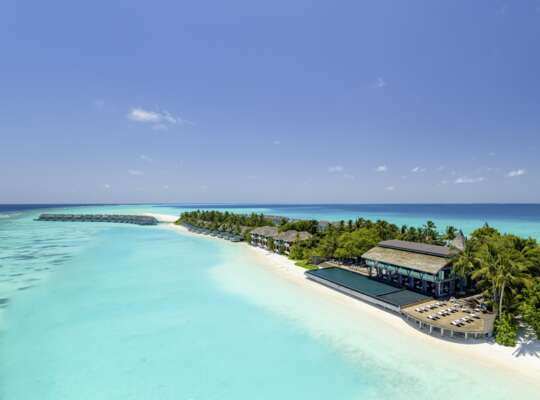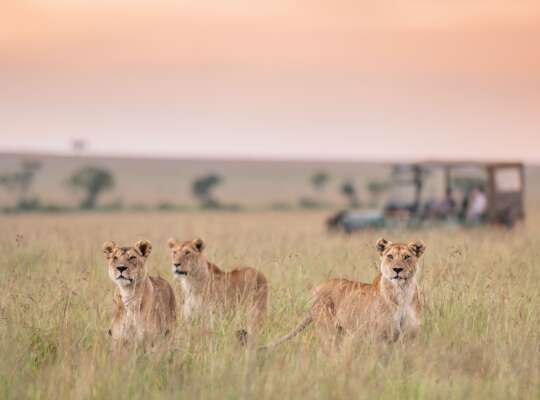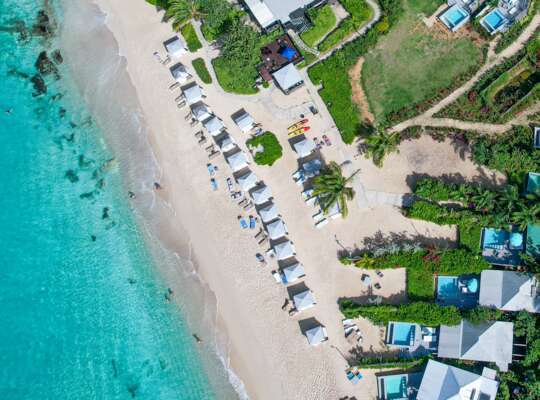Discover the beauty of the Indian Ocean through our stunning photos of the sand under a microscope.
The Indian Ocean destinations all boast paradise beaches, exotic cuisine and tropical wildlife. But take a closer look and you will see that they are each completely unique.
To illustrate how different the Indian Ocean beaches are from one another, we’ve explored their smallest details… their grains of sand.
Nationally renowned microscopic 3D photographer, Harold Taylor, has beautifully captured the different grains of sand from five of our Indian Ocean destinations: the Maldives, Mauritius, Seychelles, Sri Lanka and La Reunion.
Scroll down to discover these astonishing images and find out more about what each destination has to offer you, as well as their physical make up from Geologist, Kate Clover:
The Maldives
The image of the perfect beach in most peoples’ minds would probably resemble one of the many sandy beaches spread across the 1200 islands that make up the Maldives. Impeccably blue lagoons against crystal white sand are in abundance here, due, in part, to the protection given by the coral reef that makes up the 26 atolls of this paradise. This reef also offers food and shelter to almost 2000 species of fish, crab, turtle and other creatures, that make it one of the world’s top diving destinations. But if you prefer, you could always watch the marine life from Ithaa, the world’s first underwater glass restaurant.
The Maldives are grouped into small ring-shaped coral islands known as atolls and the sand originates from the coral reef. The sample includes six tiny snail shells and elongated rod fragments of sea urchin spines. The perforated white disc grain is a foram: a tiny marine organism that forms a hard ‘test’ or shell, that accumulates on the sea bed when the organism dies.
Seychelles
This Indian Ocean archipelago is made up of 115 islands, although 99% of the population live on the largest three – leaving us plenty of beaches to relax on! The beaches of the rocky inner islands offer the famous view of the unique gigantic granite rocks sprawled across the sand. The majority of the country, however, is made up of numerous coral outer islands, many of which are just small, untouched sand cays made up of powder white sand. There are also a few luxurious island getaways, from which you can snorkel directly off the sand to view the thousands of species of fish of the reef.
The sand grains from Anse Lazio on Praslin Island in the Seychelles originated both on land and on the reef. The grains from the sea include the clear pointed rod; it is a sclerite, a spine from a sea fan or other soft coral. The pink grain is a piece of the encrusting foram, Homotrema rubrum, also from the sea. Remnants of the island’s granite bedrock include the caramel coloured feldspar grain and the clear crystal shaped grain.
La Réunion
The French island of La Réunion may be the most diverse on our list. With tumbling waterfalls, deserted beaches, tropical forests, and of course, its dramatic volcanic peaks, you could imagine it being the setting of a far-flung movie. One of the island’s two peaks, Piton de la Fournaise, remains one of the world’s most active volcanoes, and erupts every few years. But never fear, the lava flows rarely leave the caldera. It does, however, cause the strange and unique black sand of the beaches at its base. If you’re looking for more traditional golden sandy beaches, travel over to the west coast where relaxed resorts are dotted along the island’s rugged coastline.
La Réunion’s coastal landscape varies from white sand to rocky black cliffs. These grains from Saint Paul show yellow olivine crystals (known as peridot, which have been eroded out of shoreline lava flows), and black basalt grains, both of which reflect the island’s volcanic origins. The grains are rounded and polished, indicating a coastline pounded by waves. Coral reefs are also found in some areas of La Réunion, with the grains from Saint Lev showing colourful coral and marine life fragments.
Mauritius
The French island of La Réunion may be the most diverse on our list. With tumbling waterfalls, deserted beaches, tropical forests, and of course, its dramatic volcanic peaks, you could imagine it being the setting of a far-flung movie. One of the island’s two peaks, Piton de la Fournaise, remains one of the world’s most active volcanoes, and erupts every few years. But never fear, the lava flows rarely leave the caldera. It does, however, cause the strange and unique black sand of the beaches at its base. If you’re looking for more traditional golden sandy beaches, travel over to the west coast where relaxed resorts are dotted along the island’s rugged coastline.
Mauritius is a relative youngster to the planet, created around 8 million years ago by volcanic activity under the ocean. The beaches can differ greatly between the fine white sand of the east, to the golden shallow beaches of the west. Exploring the north of the island will bring you to a number of hidden coves, whereas the south houses the infamous underwater waterfall. Due to the island’s isolation and tropical climate, it is one of the world’s bio-diversity hotspots (it was once home to the legendary Dodo bird). This is also true for the ocean surrounding the island, so no surprise that fish and seafood is top of the menu – Red Snapper being a local favourite.
This sand from Mauritius exemplifies the rich biodiversity on the reefs. It includes brown and purple urchin spines and coil-shaped forams. The bright pink and brown ribbed and grooved bits are shell fragments. The rosy pink fragment is from the encrusting foram, Homotrema rubrum, which forms irregular, bright-red skeletal masses on coral and shells. In large quantities, this foram can even impart a pink hue to beach sand.
Sri Lanka
Known for so many of its cultural and wildlife highlights inland, Sri Lanka actually benefits from some of the great beaches of Central Asia; in fact, much of its 800 mile coastline is beach. Each beach varies depending on where you are on the island. In the south, palm tree lined, golden sand beaches stretch on for miles at a time. Further west, you’ll pass the famous fort of Galle before hitting the Sri Lankan Riviera. In the East, relatively untouched by tourists, the vibe is more relaxed and there’s many deserted coves around the natural harbour of Trincomalee, where you’ll find the iconic Sri Lankan fishermen high upon their stilts.
Beach sediment from the south west coast of Sri Lanka is very fine. However, despite their tiny size, the grains show evidence of a rich offshore reef environment including caramel coloured shell fragments and spiral-shaped forams. Clear crystal-like grains appear to be feldspar, remnants of the island’s bedrock. The perforated grain illustrates bioerosion, a natural process where living organisms bore into shells in a quest for food or shelter.
Kate Clover is a geologist, passionate sand collector and author of the recent book, Secrets of Sand, co-authored with Gary Greenberg and Carol Kiely.
The high macro sand grain images were shot by Harold Taylor using a specialised Canon macro lens (MPE-65), electronic strobe flash and 'Helicon Focus' stacking software.
Inspired?
If you've been inspired by the unique sands of the Indian Ocean (not to mention their paradisical beaches!), then why not find out more about these diverse islands?
After all, their beauty is all in the detail...
Uncover more of the Indian Ocean




_w=24_h=25.webp?v=a392d311dd743e3625a1f57ba6fc3b967468f36c)
_w=24_h=25.webp?v=a392d311dd743e3625a1f57ba6fc3b967468f36c)
_w=24_h=25.webp?v=a392d311dd743e3625a1f57ba6fc3b967468f36c)